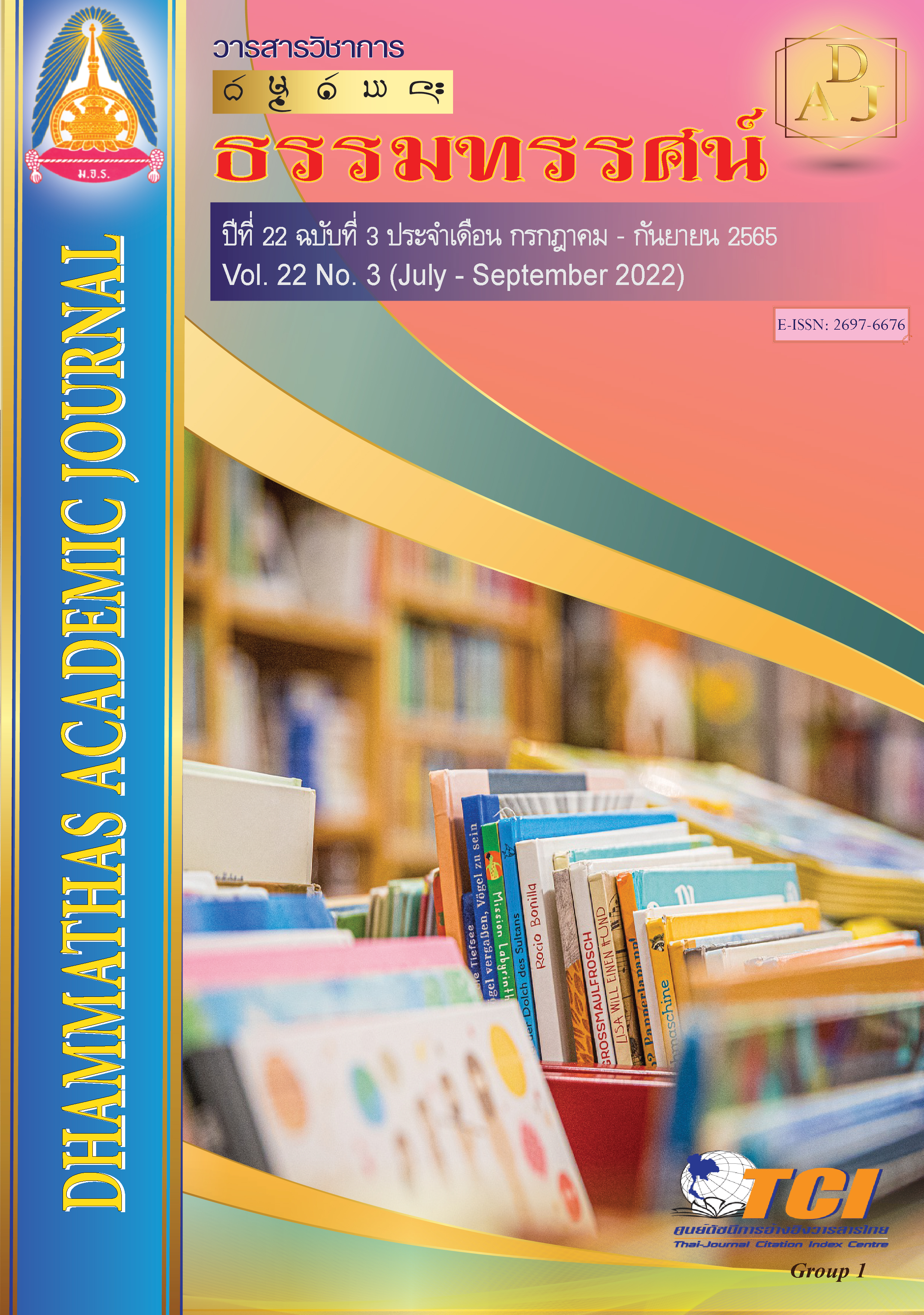REPRESENTATION Model for Designing Mathematics Instruction
Main Article Content
Abstract
Mathematical representation is one of the most important skills for supporting students’ Mathematics learning achievements. The objectives of this paper are to present the practical definition of representation and to suggest REPRESENTATION Model derived from reviewing relevant literature and from employing Content Analysis.
REPRESENTATION Model is a creation of 14 new educational terms derived from an analysis of Mathematical Representation forms which discovered by Bruner, Lesh, Goldin and Miura accompanied with psychological theories, learning theories, nature of mathematics, all-inclusive mathematics class components such as teacher and students, and all elements relationships which are used to create REPRESENTATION Model in order to be a guideline for mathematics teachers to design their lesson plans and to manage their mathematics instructions. As a result, the teachers could engage students’ participations and develop mutual communication in their classrooms. Consequently, students in the class could learn meaningful mathematics lessons. Moreover, they could perceive mathematical knowledge and mathematical processes to solve further mathematical problems effectively.
Article Details

This work is licensed under a Creative Commons Attribution-NonCommercial-NoDerivatives 4.0 International License.
เพื่อให้เป็นไปตามกฎหมายลิขสิทธิ์ ผู้นิพนธ์ทุกท่านต้องลงลายมือชื่อในแบบฟอร์มใบมอบลิขสิทธิ์บทความ ให้แก่วารสารฯ พร้อมกับบทความต้นฉบับที่ได้แก้ไขครั้งสุดท้าย นอกจากนี้ ผู้นิพนธ์ทุกท่านต้องยืนยันว่าบทความ ต้นฉบับที่ส่งมาตีพิมพ์นั้น ได้ส่งมาตีพิมพ์เฉพาะในวารสาร วิชาการธรรม ทรรศน์ เพียงแห่งเดียวเท่านั้น หากมีการใช้ ภาพหรือตารางของผู้นิพนธ์อื่นที่ปรากฏในสิ่งตีพิมพ์อื่นมาแล้ว ผู้นิพนธ์ต้องขออนุญาตเจ้าของลิขสิทธิ์ก่อน พร้อมทั้ง แสดงหนังสือที่ได้รับการยินยอมต่อบรรณาธิการ ก่อนที่บทความจะได้รับการตีพิมพ์References
กระทรวงศึกษาธิการ. (2560). ตัวชี้วัดและสาระการเรียนรู้แกนกลาง กลุ่มสาระการเรียนรู้คณิตศาสตร์ (ฉบับปรับปรุง พ.ศ. 2560) ตามหลักสูตรแกนกลางการศึกษาขั้นพื้นฐาน พุทธศักราช 2551. กรุงเทพฯ: ชุมนุมสหกรณ์การเกษตรแห่งประเทศไทย.
วจีมาศ ชัยพฤกษทล, เอื้อจิตร พัฒนจักร และไมตรี อินทร์ประสิทธิ์. (2561). การแสดงแทนในลำดับกิจกรรมการสอนในชั้นเรียนที่ใช้การศึกษาชั้นเรียนและวิธีการแบบเปิด. เข้าถึงได้จาก https://app.gs.kku.ac.th/gs/th/publicationfile/item/19th-ngrc-2018/HMP5/HMP5.pdf
วัชรินทร์ อินทพรหม. (2562). การวิเคราะห์และการนำเสนอผลการวิเคราะห์ข้อมูลเชิงคุณภาพ. วารสารวิชาการ มหาวิทยาลัยราชภัฏพระนคร, 10(2), 314-333.
อัมพร ม้าคะนอง. (2557). คณิตศาสตร์สำหรับครูมัธยม. (พิมพ์ครั้งที่ 2). กรุงเทพฯ: คณะครุศาสตร์ จุฬาลงกรณ์มหาวิทยาลัย.
เอื้อมพร หลินเจริญ. (2555). เทคนิคการวิเคราะห์ข้อมูลเชิงคุณภาพ. วารสารการวัดผลการศึกษา, 17(1), 17-29.
Bowen, G. A. (2009). Document analysis as a qualitative research method. Qualitative Research Journal, 9(2), 27-40.
Brinker, L. (1997). Using structured representations to solve fraction problems: A discussion of seven students’ strategies. Retrieved from https://citeseerx.ist.psu.edu/viewdoc/download?doi=10.1.1.827.2259&rep=rep1&type=pdf
Bruner, J. (1960). The process of education. Cambridge: Harvard University Press.
_______. (1966). Toward a theory of instruction. Cambridge: Harvard University Press.
Cuoco, A. and Curcio, F. (2001). The roles of representation in school mathematics (2001 Yearbook). Reston, VA: National Council of Teachers of Mathematics.
Goldin, G. A. (2003). Representation in school mathematics: A unifying research perspective. In J. Kilpatrick, W. G. Martin and D. Schifter (Eds.). A research companion to principles and standards for school mathematics (pp. 275-285). Reston, VA: The National Council of Teachers of Mathematics.
Goldin, G. and Shteingold, N. (2001). Systems of representations and the development of mathematical concepts. In A. Cuoco and F. Curcio (Eds.). The roles of representation in school mathematics (pp. 1-23). Reston: National Council of Teachers of Mathematics.
Jao, L. (2009). Constructing mathematical knowledge using multiple representations: A case study of a grade one teacher. (Master of Arts). Toronto: University of Toronto.
Kaput, J. (1989). Linking Representations in the Symbol Systems of Algebra. In S. Wagner and C. Kieran (Eds.). Research issues in the learning and teaching of algebra (pp. 167-194). New York: Routledge.
Kosko, K. W. and & Wilkin, J. L. M. (2010). Mathematical communication and its relation to the frequency of manipulative use. International Electronic Journal of Mathematics Education, 5(2), 79-90.
Lesh, R. (1979). Mathematical Learning disabilities: Considerations for identification, diagnosis, and remediation. Applied Mathematical Problem Solving, 111-180.
_______. (1981). Applied mathematical problem solving. Educational Studies in Mathematics, 12(2), 235-264.
Miura, I. (2001). The influence of Language on Mathematical Representations. In F. R. Curcio (Ed.). The roles of representation in school mathematics: 2001 yearbook (pp. 1-21). Reston, VA: National Council of teachers of Mathematics.
National Council of Teachers of Mathematics. (2000). Principles and standards for school mathematics. Reston, VA: National Council of Teachers of Mathematics.
Piries, S. (1998). Crossing the gulf between thought and symbol: Language as (Slippery) stepping-stones. In H. Steinbring, M. G. B. Bussi and A. Sierpinska (Eds.). Language and communication in the mathematics classroom (pp. 7-29). Reston, VA: National Council of Teachers of Mathematics.
Stylianou, D. (2010). Teachers’ conceptions of representation in middle school mathematics. Journal of Mathematics Teacher Education, 13(4), 325-343.
Sun, Y. (2005). The role of instructional representations on students’ written representations and achievements. Retrieved from http://oaktrust.library.tamu.edu/bitstream/handle/1969.1/4243/etd-tamu-2005B-EDCI-Sun.pdf

